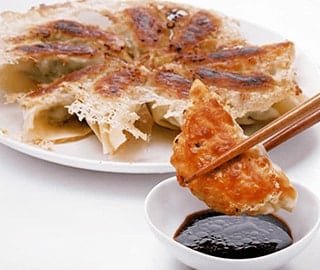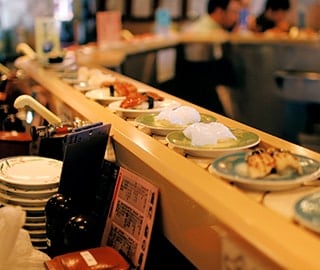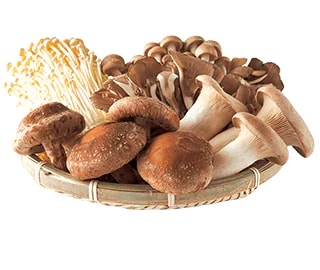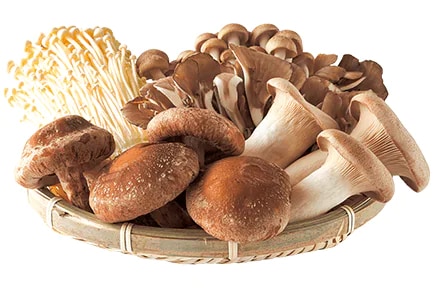
A wide selection of mushrooms are available in Japan, and they appear in any number of dishes including hot pots, sautés, rice dishes and soups. Mushrooms can be categorized into artificially cultivated varieties and wild mushrooms; in Japan there are estimated to be some 4,000 to 5,000 different types of wild mushrooms, and of these, only about 100 kinds are edible.
Mushrooms are largely divided into saprophytic mushrooms, which find nutrition in decayed vegetation; and mycorrhiza mushrooms, which grow in symbiosis with live tree roots. Artificially cultivated mushrooms are saprophytic. Mushroom cultivation was adopted in Japan as early as the 1600s to grow shiitake mushrooms. Currently, some mushrooms including shiitake, enoki, bunashimeji and maitake are cultivated primarily in mushroom beds throughout the year; recently, eryngii and other mushrooms of foreign origin have been raised using this method. At present, some 20 types of mushrooms are cultivated and available here year-round.
Japanese have long included mushrooms in their diet
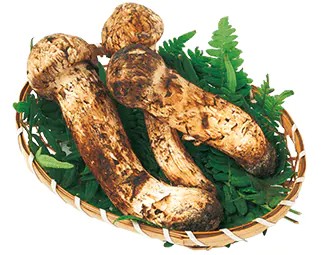
Natural wild mushrooms, on the other hand, come into season in Autumn, and this is the time when people enjoy mushroom-picking in Japan’s woods. Wild mushrooms also include poisonous varieties, and because some of these resemble edible types, it is unwise to pick and eat wild mushrooms unless experienced or following the advice of a specialist. About two-thirds of the country consists of forested land, and the Japanese have welcomed wild mushrooms into their diet for centuries, including shiitake, which grow on stumps or fallen broad-leaf trees; the delicious maitake; and matsutake, which grow on the roots of Japanese red pines. With a very limited yield, matsutake are expensive, and are referred to as the “King of Mushrooms.” More affordable matsutake available in Japan are imports. All mushrooms contain a considerable amount of umami. For example, sun-drying shiitake mushrooms produces guanylic acid, a constituent of umami, making it possible to experience a flavor that raw shiitake do not have. When cooking with dried shiitake, they are soaked in water and rehydrated for use in simmered dishes, while shiitake soaking water is used as dashi.

